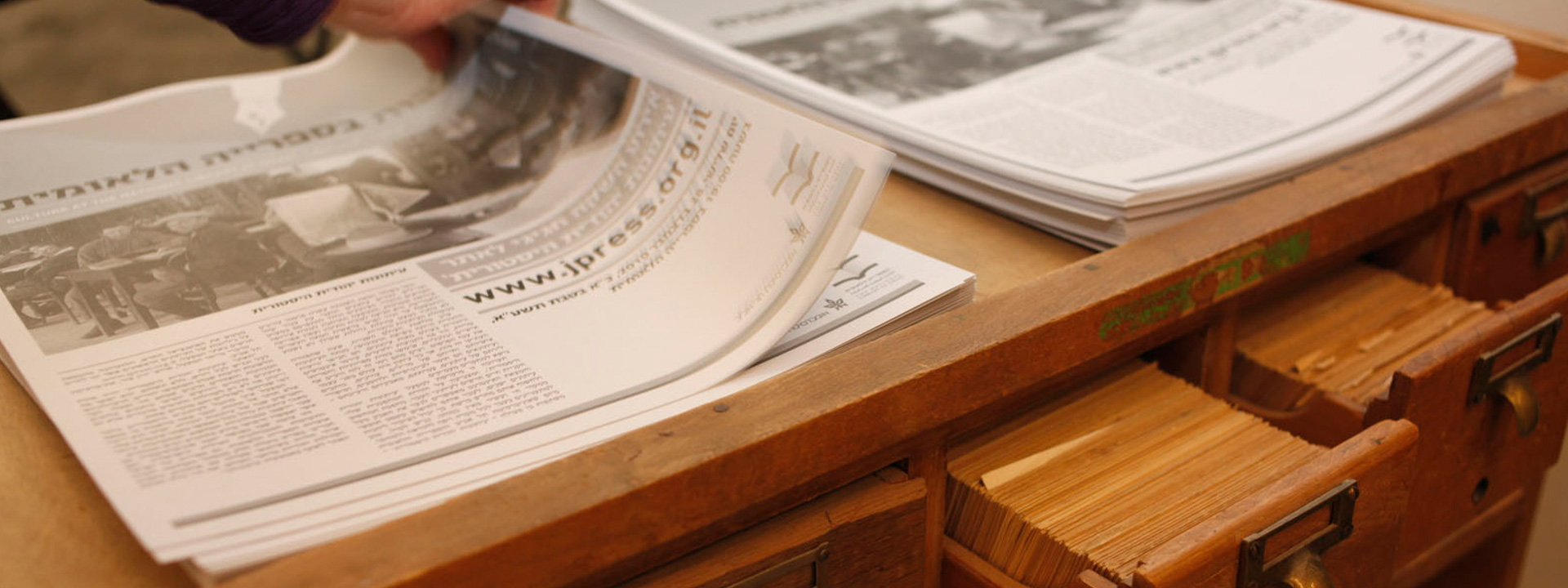על המדור
The first Hebrew periodicals emerged as a result of the European Enlightenment’s influence toward the end of the 18th century on Jewish intellectuals and the modern idea of emancipation. A prominent circle of these intellectuals operated in Prussia, where HaMe’assef, the first Hebrew periodical, was established in Königsberg in 1784. Their ideology attempted to create a bridge between Jewish communities and their surrounding society by disseminating the culture and new values of the Enlightenment. Similar circles operated in other parts of Central and Western Europe; a few were also active in the East. They advocated ending the conservative religious monopoly on education; expanding the study of secular and scientific subjects; abandoning characteristic Jewish occupations, such as peddling, in favor of industrial or agricultural work; and more. Among other things, these intellectuals rejected the use of Yiddish (the Jewish language used specifically by Ashkenazi communities) and supported adopting the local national language. However, they considered Hebrew legitimate both as a holy tongue and as the language of Jewish high culture over the course of history, and they adopted it for use in their publications and initial efforts to prepare Jews for the demands of modern society. Beginning in the late 18th century, as a result, the first periodicals of what is now known as the Haskalah, or the Jewish Enlightenment, were published in Hebrew.
The early maskilic Hebrew periodicals focused on literary and educational content, catered to a very limited audience, and were short-lived. Jewish journalism in general did not flourish until almost the 1940s; it was only then that Jewish periodicals and newspapers began to multiply in Central and Western Europe. However, these papers already reflected the process of acclimating to local culture and were written in local national languages: German, English, French, Hungarian, etc. The growth of Hebrew journalism gathered momentum only when the Haskalah movement expanded in Eastern Europe, home to the majority of the world’s Jewish population. The processes of acclimation to the local Slavic cultures were different than in other European regions, and Hebrew did not quickly fall out of use. A relatively large number of Hebrew readers existed, and it began to develop as a modern language. As a result, during the 1850s Hebrew newspapers and periodicals began to be published that emphasized news reports and enjoyed a long lifespan (Ha-Magid, Ha-Melitz, and more). These new media were used not only by the Hebrew maskilic stream of Judaism, but also by the competing stream, the Haredi Orthodox movement (Ha-Levanon). When the seeds of Jewish nationalism began to appear, several maskilic newspapers sided with the new movement, and new papers were founded supporting its ideology. The development of the small Jewish community in Palestine as an ideological center was also expressed in the development of the Hebrew press there (Ha-Levanon, Habazeleth, and Eliezer Ben-Yehuda’s newspapers).
Because it used the “holy tongue” common to Jewish communities throughout the world, Hebrew journalism was an extremely effective instrument in encouraging modern communication between those scattered communities -- exchanging information, encouraging projects for mutual aid, and publicizing the platforms of new movements that were developing in different regions. The existence of Hebrew journalism also encouraged public development not only in European communities, but outside Europe as well. Local correspondents from around the world sent news stories to Hebrew newspapers and participated in the debates that took place in their pages.
This section includes a few newspapers whose publication continued into the 20th century, while the majority of their issues appeared in the 19th century. An exception to this rule is Ha-Zman which was published in its entirety in the beginning of the 20th century.

 Sign in with Google
Sign in with Google
 Sign in with Facebook
Sign in with Facebook
